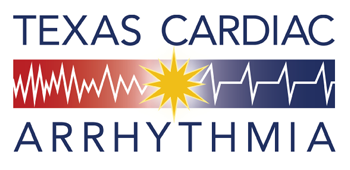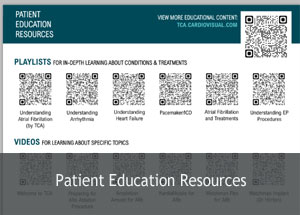Patient Education
Heart TestsElectrocardiogram (ECG/EKG)
A special recording machine is attached to legs, arms and chest via 10 electrodes and takes a snapshot of the electric signals creating heart rhythms.
Echocardiogram
A special imaging machine with a microphone-like attachment creates a videotaped image of heart structures that shows the heart’s four chambers, valves and movements.
Holter Monitoring
To detect irregular heart rhythms, patients wear a Walkman-size recording box attached to their chest by five adhesive electrode patches for 24-48 hours.
Event Recorder
Patients carry a pager-sized event recording box so they can make a one- to two-minute recording of their heart rhythm when they actually experience symptoms. This is useful for patients with relatively infrequent and brief symptoms.
Tilt Table Test
This test evaluates the potential reasons for fainting, or syncope. Heart rhythm and blood pressure are carefully monitored while a patient rests on a special table. The table tilts the patient upright at a 70-80 degree angle for 30-45 minutes. If the patient faints, it usually means that he or she has a condition called vasovagal or neurocardiogenic fainting, which is not life threatening.
Electrophysiology Study (EPS)
Under sterile conditions, thin tubes called electrode catheters are inserted into veins in the groin or neck area and threaded into the heart. The heart’s electrical conduction system is measured. Electrical impulses are applied to the heart to provoke and analyze a fast heart rate. This study can diagnose symptomatic and potentially life-threatening slow and fast heart rates.
Radionuclide Ventriculography
Also called the first pass technique, or Multiple-Gated Acquisition Scanning (MUGA), radionuclide ventriculography is a nuclear medicine test that measures the heart’s pumping ability.
Cardiac Catheterization
A thin hollow tube called a catheter is inserted through a blood vessel and, under X-ray guidance, threaded to the heart in cardiac catheterization. The catheter can obtain tissue samples of heart muscle that may be damaged, measure the pressure in the heart, or diagnose blood vessel or heart valve disease.




